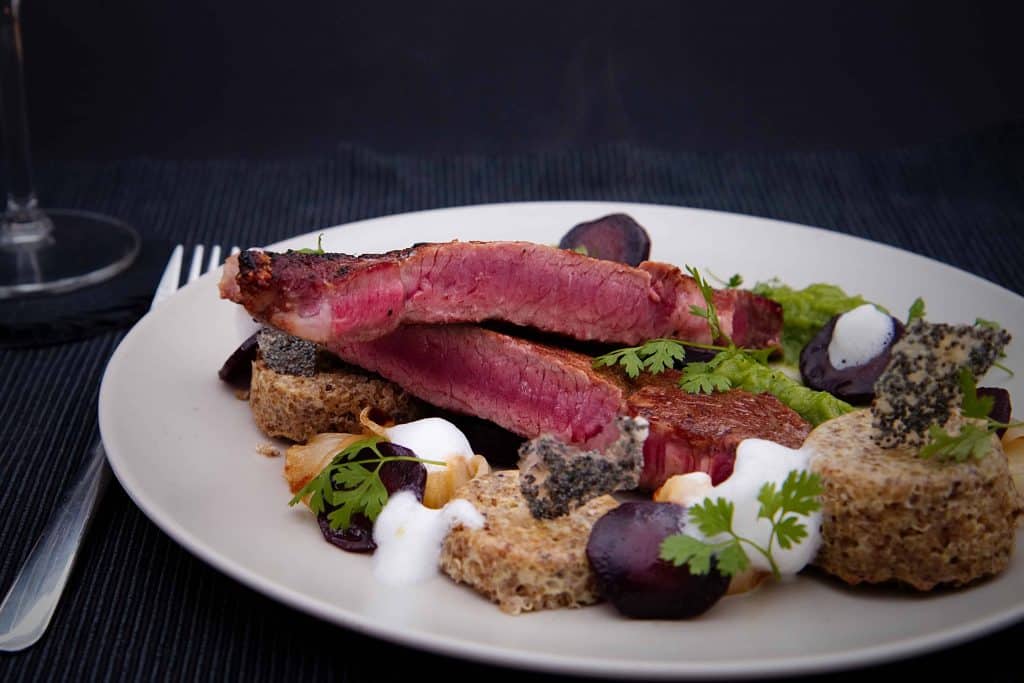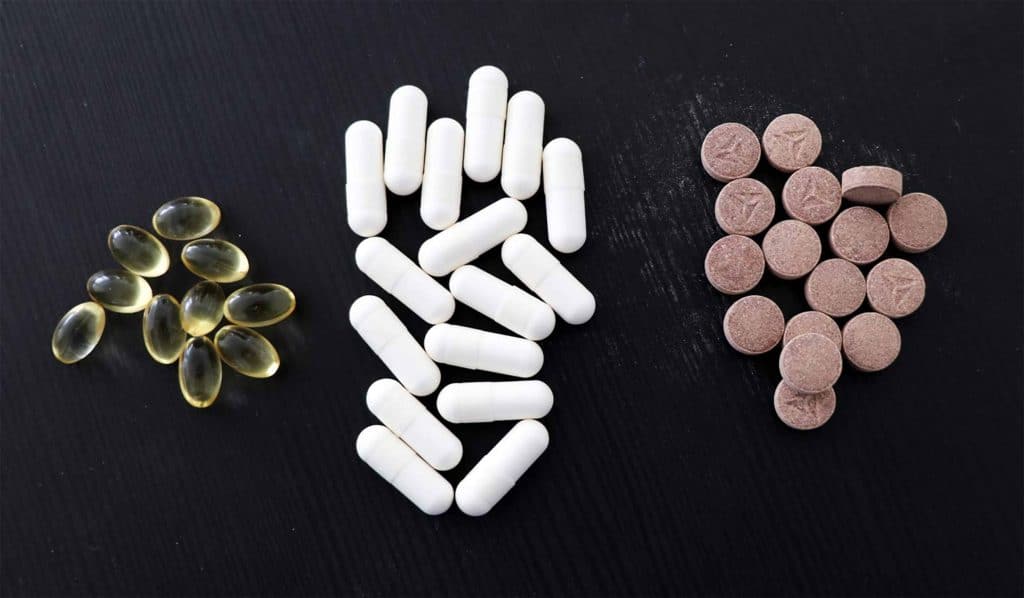Nutritional dogma is like a religion nowadays. Trying to have a balanced conversation about food is next to impossible. I don’t know exactly why but every time I start a conversation with someone that’s currently on a diet there’s very little tolerance for debate.
My real opinion is that depriving your body of nutrients requires will power, and to stick with a restrictive diet disallows any room for subjectivity.
When I started to log more than 100 miles per week on a bike, I knew that I had to adjust my diet. I felt deprived, low energy a few hours after my longer rides.
This is the research that I did to find a diet that both improved my performance on the bike and transformed my body.
Before adopting my solution as your own, understand that each person is unique. Age, gender, current weight, metabolic conditioning all play a role in an optimal diet.
The principles that I list can be tested but continue to tweak until your body is responding fully.
What Is The Right Cyclist’s Diet?
We will want to start with slow but easy to digest Carbohydrates. Carbs are your body’s primary fuel source. This is especially true if your training is going to involve sprint intervals or hills.
Your muscles will need to have stored glycogen as a quick energy source if you need to react aggressively or quickly in competition. Competition can either be a race or it can be the terrain you are trying to navigate. The best carb sources are listed below:
- Brown Rice
- Sweet potatoes
- Basmati Rice
- Quinoa
- Steel Cut Oatmeal
- Cruciferous Vegetables
Moving beyond Carb, every meal should be a mix of slow carbs, lean protein, and healthy fats. Let’s move onto protein:
Below are the best sources of protein:
- Eggs
- Greek Yogurt (low sugar)
- Cottage cheese 2% fat
- Chicken, Skinless/Breast
- Fish (Omega 3 & 6 over Omega 9)
- Bison
- Lean Beef (93% or higher)
Now let’s talk about Fat. Fat plays a critical role in energy balance while cycling. It’s estimated that stored fat in the body makes up more than 80% of the available energy source. You will quickly burn through muscle glycogen, and the sugar in your blood, fat stores will be the next stop.
Eating plenty of healthy fats while limiting carbohydrates can help you become fat-adapted (we’ll revisit later).
The type of fat matters. Fats are classified into the two camps: polyunsaturated / monounsaturated (good) and Trans fats (bad). The primary source of the Omega 9 (bad) is red meat and processed food. The Omega 3 and 6 is found in nuts, seeds, fish, and flaxseed. If interested there is a deeper Harvard review that does a very good job explaining the cause/effect.
Healthy Fats
- Avocados
- Whole Eggs
- Nuts
- Dark Chocolate
- Chia Seeds
- Cheese
- Milk
- Olive oil
Cycling Diet: What Should You Not Eat?
Eating a good balanced diet as described above is the first step, cutting out the bad is the next. Remember, the primary key is to fuel your body for excellence on the bike but not allow calories to balloon that results in unwanted weight gain.
The first group to go is highly processed, carbohydrate-based foods. Here we are talking about traditional junk food. Potato chips, pretzels, white bread, Twinkies ®, Oreos ®, you get the point.
The other “no-no” food group is high fat protein, especially when traced with high glycemic carbs. Red meat is typically the fatest of protein sources. The traditional ‘ground chuck’ you will find at your grocery will have 20-25% fat.
The leanest cuts of steak are sirloin, top round, and flank. Once you get beyond these cuts the saturated fats start to jump. Again, with everything being a balance you are trying to keep a protein to fat ratio relatively high with your protein intake.
The other group that I’m going to warn against prior to a ride is high-fiber. That goes against the long-term diet plan but I’ve had a few ‘emergencies’ when I tip the pre-meal ride too far to fiber. Everybody is different, but this is your reminder!
Cycling Diet: What Is the Perfect Meal Before a Ride?
The BBC had an ex-rider survey the practices of professional riders and they provided a list of things that they avoid.
- Fatty Red Meats
- Alcohol
- High GI Carbs (white pasta, white bread, sugar)
Prepping Tips before the big day
- Don’t have a heavy meal after 8 pm for an AM start. You’ll want to give your digestion system a chance to chill.
- Fully hydrate your body the night before
What they focus on is lean meat and cruciferous vegetables. The will start the next day with healthy fats of whole eggs/omelette with veggies, a good fiber source (oatmeal/whole wheat toast), and continue to drink water.
What are the Right Supplements for an Active Cyclist?
Click any of the headings for the best deal available for each supplement:
Creatine Used to boost endurance and power to take hills. This helps muscle cells produce more energy.
BCAA’s Used to prevent muscle breakdown after long rides. The Amino Acid profile is critical in a calorie deficit.
BeetsUsed to increase Nitric Oxide production. This will keep your blood flowing and help with hormone balance.
ElectrolytesUsed to restore mineral balance after a draining ride. Should also be used while on the ride as well.
CalciumThis supports strong bones, and quicker recovery.
Magnesium This will help with hormones and bone density.
What to Eat While on the Ride
Going back to the BBC survey, the ex-cyclist found the following commonalities worked best for riders on tour:
- Energy Bars
- Trail Mix (watch the choking hazard)
- Peanut Butter and Jelly on Whole Wheat Bread (Most Common)
- Bananas (almost uniformly recommended)
The reminder from the riders, and I find this to be true as well, is that it is best to sip (not gulp) often. Also, make sure you do not wait until you are physically hungry before eating. You will be playing catch-up at that point, and that’s very difficult to do.
Chocolate Milk and Cycling
There’s a lot of talk about the benefits of drinking low-fat chocolate milk to replenish after a ride. The logic normally centers around adding a protein source while also rehydrating your body. Milk is approximately 90% water (good) but also has a nice punch of protein. The protein in milk is 82% cassein with the balance being serum. Both of these protein sources are slow digesting, longer term energy sources.
As study complete by the International Journal of Sport Nutrition and Exercise Metabolism had an interesting outcome.
“In the study, nine male cyclists rode until their muscles were depleted of energy, then rested four hours and biked again until exhaustion. During the rest period, the cyclists drank low-fat chocolate milk, Gatorade, or Endurox R4.
During the second round of exercise, the cyclists who drank the chocolate milk were able to bike about 50% longer than those who drank Endurox, and about as long as those who drank the Gatorade.”
There has been a lot of speculation on this outcome because Endurox R4 has a very similar protein to water ratio as milk. Obviously a pretty small sample, and difficult to control all variables, but the popularity of chocolate milk is growing on tour and bike trails.



